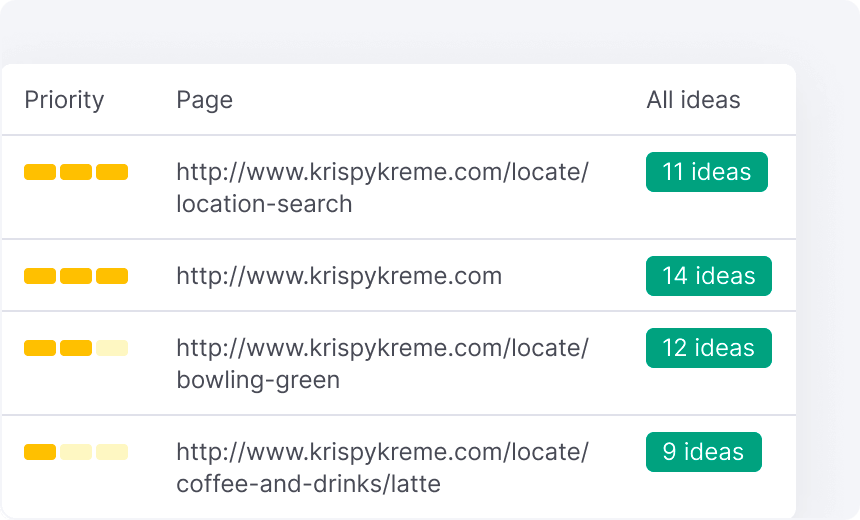Discovering What Is Not Considered a Default Medium in Google Analytics for SEO
Discovering What Is Not Considered a Default Medium in Google Analytics for SEO
Blog Article
Revealing the Unconventional Mediums in Google Analytics Beyond Default Settings
In the realm of digital analytics, Google Analytics stands as a cornerstone for services looking for to understand their on the internet visibility. By venturing past the surface and diving right into the complexities of social media information, e-mail campaign performance, referral website traffic sources, straight traffic patterns, and custom-made network groupings, a prize chest of info waits for those eager to embrace a more nuanced strategy.

Leveraging Social Media Site Insights
Occasionally overlooked, yet profoundly beneficial, is the practice of leveraging social media sites insights within the world of Google Analytics. By integrating data from systems like Facebook, Twitter, Instagram, and LinkedIn right into Google Analytics, businesses can acquire a much deeper understanding of their target market and the performance of their social media sites campaigns.
Via this combination, marketing experts can track and analyze individual habits on their internet site that stems from social media systems. They can identify which social media sites networks are driving one of the most traffic, which web content is reverberating with the target market, and which projects are converting one of the most leads. This insight permits data-driven choices to enhance social media techniques and improve general advertising and marketing performance.
In addition, by integrating social media understandings with Google Analytics, organizations can develop more targeted and customized campaigns - what is not considered a default medium in google analytics. They can use market info, passions, and online actions collected from social media sites to refine their audience division and supply customized messages that reverberate with specific consumer groups. This targeted technique can bring about greater engagement, enhanced conversions, and inevitably, improved return on investment
Uncovering Email Campaign Performance
Discovering Email Campaign Performance includes evaluating crucial metrics and efficiency indicators to review the performance of e-mail advertising initiatives. When delving into email campaign performance, it is vital to evaluate metrics such as open prices, click-through prices, conversion rates, and unsubscribe rates. Open rates indicate the percentage of recipients who opened up the e-mail, providing understanding right into the effectiveness of subject lines and sender names. Click-through rates determine the percent of receivers that clicked links within the email, showing engagement levels. Conversion prices track the portion of recipients who completed a preferred activity after clicking a link in the email, such as purchasing or authorizing up for an e-newsletter. Last but not least, unsubscribe rates highlight the number of recipients who chose out of obtaining more e-mails, clarifying e-mail material high quality and relevance. By examining these metrics, marketing professionals can tweak their email projects for much better involvement and performance.
Analyzing Referral Web Traffic Sources
After examining the efficiency of e-mail campaigns through vital metrics such as open prices and conversion rates, the following crucial action is analyzing recommendation web traffic resources in Google Analytics to recognize where site site visitors are originating from and just how they interact with the website. Referral web traffic resources refer to the sites that route individuals to your site through clickable links. By diving right into this data, services can obtain insights right into which exterior systems are driving traffic to their site, whether it be social networks platforms, companion sites, or on the internet directory sites.
It assists organizations identify high-performing recommendation resources that contribute considerably to website traffic and conversions. Google Analytics offers detailed records on reference traffic, enabling organizations to track the efficiency of each referral source accurately and make data-driven decisions to enhance their online visibility.
Checking Out Direct Traffic Patterns
Checking out the straight website traffic patterns in Google Analytics offers useful insights into customer actions and the efficiency of campaigns - what is not considered a default medium in google analytics. Straight traffic describes site visitors that land on a site by straight inputting the link into their browser, using book marks, or clicking on untagged links. Recognizing straight traffic patterns can assist online marketers evaluate the influence of offline advertising and marketing initiatives, brand name acknowledgment, and the performance of word-of-mouth references
By delving into straight website traffic data, companies can uncover essential info concerning customer intent and brand loyalty. Analyzing the actions of straight visitors, such as the web pages they see, the time invested in website, and the conversion price, can provide a deeper understanding of user engagement and the general performance of the internet site in converting visitors right into customers.
In addition, tracking direct website traffic patterns in time permits businesses to identify trends, seasonality impacts, and the success of certain campaigns or promos in driving direct brows through. This information can after that be used to improve advertising and marketing techniques, enhance web site material, and boost the total individual experience to optimize conversions.
Making Use Of Customized Channel Groupings
Making use of custom channel groupings in Google Analytics allows organizations to classify and evaluate their website traffic based upon particular standards, providing useful insights for optimizing advertising and marketing methods. Custom network groups make it possible for business to create their very own customized collections of web traffic sources, such as social media sites, natural search, email campaigns, and recommendation web traffic. By specifying these collections, businesses can gain a much deeper understanding of exactly how different advertising and marketing networks contribute to their site web traffic and conversions.
This attribute is specifically useful for businesses with varied advertising and marketing strategies throughout different platforms. A company running both paid and browse around these guys organic social media campaigns can separate in between the two to analyze their private efficiency properly. Additionally, customized channel groups can help recognize any type of neglected or taken too lightly traffic sources that may be driving useful interaction.
Conclusion

By venturing beyond the surface and delving into the details of social media data, e-mail project performance, referral web traffic sources, direct traffic patterns, and personalized network groups, a treasure trove of info waits for those ready to welcome an extra nuanced approach. They can recognize which social media channels are driving the most traffic, which content is reverberating with the audience, and which projects are converting the most leads.After reviewing her explanation the efficiency of email campaigns via vital metrics such as open rates and conversion rates, the next crucial step is assessing referral web traffic sources in Google Analytics to understand where website visitors are coming from and how they communicate with the website. Customized channel groups go now enable firms to produce their very own personalized collections of traffic resources, such as social media, organic search, email projects, and recommendation website traffic. By leveraging social media insights, revealing e-mail project performance, evaluating recommendation web traffic sources, exploring straight traffic patterns, and utilizing customized channel groupings, marketing professionals can acquire useful insights into their on-line visibility.
Report this page